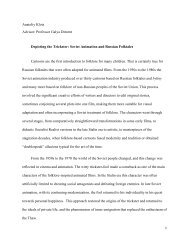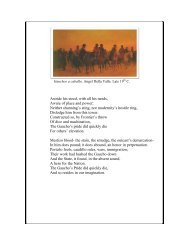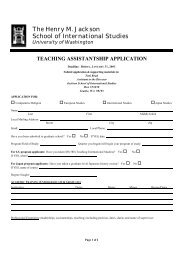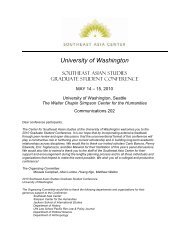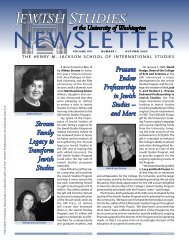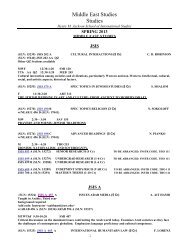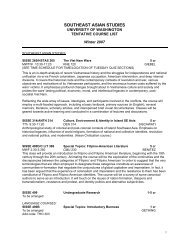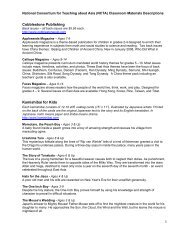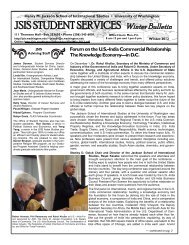to view full paper
to view full paper
to view full paper
Create successful ePaper yourself
Turn your PDF publications into a flip-book with our unique Google optimized e-Paper software.
But the tale itself then takes a <strong>to</strong>tally different path than it would with male batyrs. The<br />
youngest sister encounters a bear, is forced <strong>to</strong> become his wife and produces a half-bear son<br />
Aikpalvan (Motifs B601.1.1. Bear steals woman and makes her his wife and F611.1.1. Strong<br />
man son of bear who has s<strong>to</strong>len his mother; usually ATU Types 301, 650). The tale then follows<br />
adventures of the bear-man Aikpalvan, who kills his father-bear, frees his mother and arrives <strong>to</strong><br />
the palace of his grandfather, who plots against Aikpalvan by sending him off <strong>to</strong> perform<br />
difficult tasks during which the bear-man gets a princess <strong>to</strong> marry, defeats his grandfather, and<br />
becomes the ruler of the land. As an afterthought, it is reported that he finds his aunts, whose<br />
adventures are never narrated. Unavoidably, the message of the tale is that even when females<br />
attempt <strong>to</strong> act as males they finish falling in<strong>to</strong> the persecuted female type and have <strong>to</strong> be saved<br />
by a male relative.<br />
Narrative Told from the Female Protagonist’s Point of View<br />
Acting on Her Own Behalf—Woman’s Magical Horse<br />
In published literature, this is a very rare type. In Central Asia proper, I have encountered<br />
only five versions of this tale, two from Mongolia, 29 one from Kalmykia (the Kalmyk language<br />
is related <strong>to</strong> Mongolian), 30 one from Kazakhstan (Kazakh is a Turkic language), 31 and one from<br />
29 “Soning Tsetseg,” translated from Mongolian by Nicholas Poppe, Jr, in The Mongolia Society Occasional Papers:<br />
Number Four; Mongolian Folktales, S<strong>to</strong>ries and Proverbs in English Translation, edited by John R. Krueger<br />
(Blooming<strong>to</strong>n, IN: The Mongolia Society, 1967), 35-38; and “Жеребёнок-спаситель [Colt the Savior]” in<br />
Монгольские сказки [Mongolian foktales] in Russian translation, compiled by Georgii Mikhailov, (Moscow:<br />
Gosudarstvennoje izdatel’stvo khudozhestvennoi literatury, 1962), 92-96<br />
30 “О девушке, ставшей царицей, и о её одиннадцати сыновьях [About a Girl Who Has Become the Queen and<br />
about her Eleven Sons]” in Калмыцкие народные сказки [Kalmyk folktales] in Russian translation, edited by I.K.<br />
Ilishkin and U.U. Ochirov (Elista: Kalmytskoie gosudarstvennoie izatel’stvo, 1961), 7-18.<br />
31 “Девушка Дудар [A girl by the name of Dudar]” in Золотой караван: сказки тюркоязычнчх народов<br />
Казахстана [Golden caravan: folktales of the Turkic peoples of Kazakhstan], in Russian, Valeria.T. Marchenko,<br />
compiler (Almaty: Ɵner, 1994), 43-52. Also see Appendix <strong>to</strong> the <strong>paper</strong>.<br />
13



